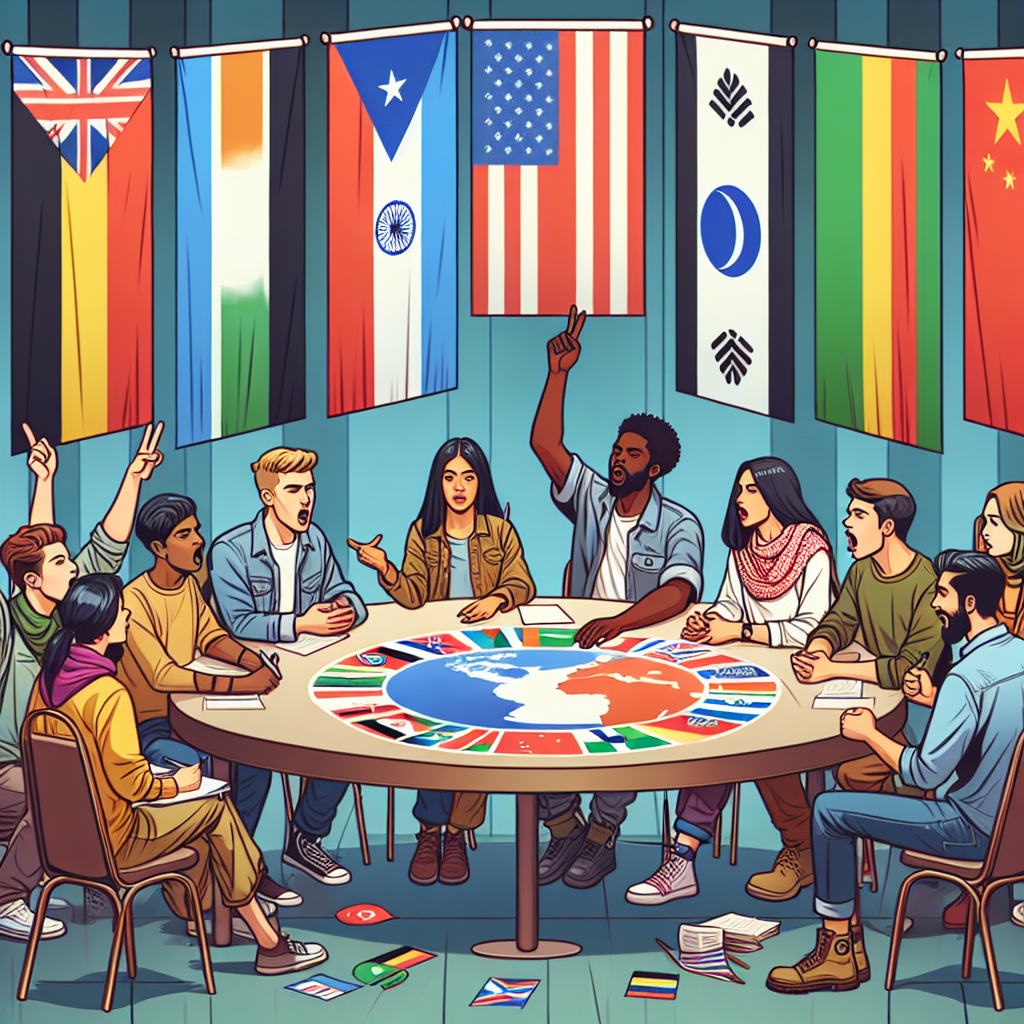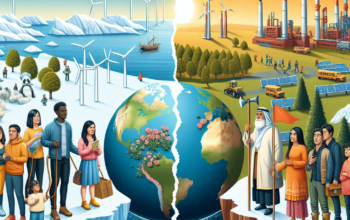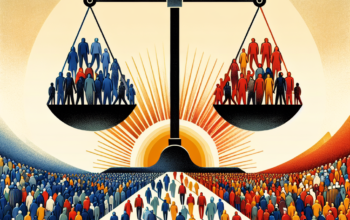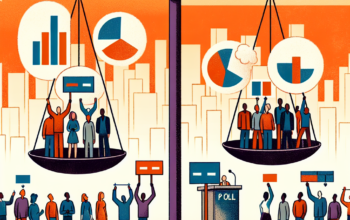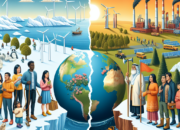The Rise of Young Activists in Political Movements Worldwide
The phenomenon of young activists stepping into political movements worldwide has become more pronounced in recent years, especially as we progress through 2025. Fueled by urgent issues like climate change, social justice, and political transparency, these youth-driven movements have demonstrated remarkable capacity for mobilization and impact. Young people are channeling their disappointment with traditional politics into collective action, shaping the political landscape across various nations. This article delves into the rise of young activists, examining their influence, methods, and the global ramifications of their actions.
Young Activists: A New Force in Political Movements
The emergence of young activists as a formidable force in political movements reflects a seismic shift in engagement strategies and priorities. Empowered by technology, these young individuals have transformed traditional activism into a global phenomenon. With tools such as social media, they spread awareness and mobilize support across borders. Movements like Fridays for Future, led by Greta Thunberg, have galvanized millions of young people worldwide, demanding action on the climate crisis. This generation’s activism is characterized by an emphasis on immediacy and a demand for accountability from their leaders.
Furthermore, as young activists assert their voices in political dialogues, they remind world leaders of the urgency of pressing issues. For instance, in the wake of climate disasters and social inequality exposed by the COVID-19 pandemic, youths are leveraging their platforms to push for systemic reforms. The combination of shared experiences, often exacerbated by global crises, has unified a diverse group of young activists from various backgrounds, significantly amplifying their impact on political movements globally.
The Role of Technology in Activism
Technology has revolutionized how young activists engage with political issues, enabling rapid dissemination of information and fostering global solidarity. Social media platforms have become the primary arenas for activism, where young people share their narratives, organize protests, and influence public opinion. For example, the Black Lives Matter movement gained unprecedented visibility through hashtags like #BlackLivesMatter, illustrating how digital tools can propel local issues onto global stages. In 2025, the reliance on these digital platforms continues to proliferate, further democratizing activism and empowering voices that were historically marginalized.
Moreover, the rapid growth of podcasting and streaming platforms allows activists to highlight critical issues, educating wider audiences about their causes. Young activists have turned these mediums into powerful tools for advocacy, creating content that resonates with peers while challenging outdated societal narratives. As they harness the power of technology, young people are not only thriving in raising awareness but are also fostering new alliances across generations, connecting with seasoned advocates who support their vision for transformative change.
Key Movements Led by Young Activists in 2025
Several notable movements spearheaded by young activists have marked 2025 as a pivotal year for youth engagement in politics. One of the most impactful movements is the Climate Justice Movement, which sees youth taking the charge in protests demanding that governments adhere to sustainable development goals. Working in tandem with established environmental organizations, young activists are lobbying for legislative reforms that prioritize ecological health, renewable energy, and corporate accountability. Their passionate presentations and public mobilizations are compelling world leaders to confront climate issues head-on.
Another significant youth-led movement is the Global Equality Initiative, which addresses systemic injustices related to race, gender, and sexual orientation. As intersectionality becomes a crucial framework in activism, young leaders are pushing for policies that reflect the diverse experiences of marginalized communities. Initiatives such as awareness campaigns, educational workshops, and legislative lobbying are empowering youths globally, and their demands for comprehensive anti-discrimination laws are gaining traction in various national legislatures.
The rise of youth-led efforts in advocating for political transparency has also become a notable trend in 2025. Mobilized by the increasing incidence of corruption scandals in various countries, young activists are demanding accountability and reform in governmental institutions. Petitions and grassroots campaigns have effectively mobilized citizens to take a stand against political complacency, exemplifying how youth can impact national dialogues about ethics in governance. Their insistence on transparency is reshaping how constituents perceive the role of leadership and democratic engagement.
The Impact of Globalization on Youth Activism
Globalization has played a significant role in shaping the current landscape of youth activism, creating a interconnected culture of shared concerns and collective action. Through exposure to international perspectives via social media, young activists are increasingly adopting a global mindset. They share strategies, resources, and testimonies from movements across the world, enhancing their own efforts and creating a unified front against oppression and injustice. This borderless collaboration not only amplifies their voices but also enriches their approaches to organizing.
Additionally, globalization has allowed the penetration of diverse cultures and ideas, thereby strengthening the efficacy of youth-led movements. Young activists borrow tactics from various cultural contexts, whether it be protest art from Latin America or grassroots organizing from indigenous communities in Australia. This cultural cross-pollination encourages innovative methods of engagement, making activism more resonant with diverse populations. As activists learn from one another, they adapt their messages to local realities, fostering more inclusive movements.
Furthermore, we witness that globalization has provided a capacity for transnational coalitions, resulting in campaigns that transcend borders. In 2025, major events, such as world climate strikes or youth-led forums for equality, bring together young people from different countries, magnifying their impact through solidarity. This global collaboration enables activists to pressure institutions on international platforms, thereby forcing governments and corporations to respond to a collective demand for change that is harder to ignore than localized movements.
Challenges Faced by Young Activists in Political Movements
Despite their significant contributions, young activists face numerous challenges that threaten their movements. One of the most pressing issues is the crackdown on free speech in various countries. Young activists often encounter resistance from authoritarian governments that perceive their demands for accountability and reform as a threat. In many instances, protests are met with intimidation, violence, or, in the worst-case scenario, imprisonment. The suppression of dissent creates an atmosphere of fear, ultimately stifling the spirit of activism.
Another challenge pertains to the sustainability of these movements. Many young activists are faced with the pressure of balancing their advocacy work alongside education and employment commitments. The emotional toll and burnout that arise from constant mobilization can lead to high dropout rates among young leaders. To combat this, movements are increasingly focusing on mental well-being and resilience, offering support networks and mentorship programs to ensure the sustainability of their campaigns in the long term.
Moreover, young activists navigate the complexities of intersectionality within their movements. While movements often fight for common causes, differing priorities among various groups can sometimes result in internal conflicts. Ensuring that all voices are heard and that inclusivity is maintained can be challenging. Young leaders must employ diplomatic skills and actively promote dialogue among diverse groups to foster unity. By embracing their varied experiences and perspectives, activists can cultivate more cohesive and impactful movements.
Conclusion
In conclusion, the rise of young activists in political movements worldwide represents a transformative moment in history, characterized by technology-driven engagement and a global mindset. By mobilizing their peers and advocating for urgent causes—from climate change to social justice—young activists have emerged as a powerful force in the political landscape. While they face unique challenges, their resilience continues to pave the way for progressive change. As we move further into 2025 and beyond, it is crucial to support these young voices, providing them with the tools and platforms necessary to effect change and shape the future.
FAQs
What are the primary issues that young activists are dealing with today?
The primary issues impacting young activists today include climate change, social justice, systemic inequality, and political transparency. Young activists are increasingly focusing on these areas as they mobilize for change.
How do young activists utilize technology for their movements?
Young activists leverage social media, podcasts, and other digital platforms to raise awareness, organize events, and connect with a global audience. These tools enable them to reach larger audiences and inspire collective action.
What challenges do young activists face?
Young activists face challenges such as government repression, burnout, and the difficulty of maintaining unity amid diverse perspectives. Addressing these challenges is essential for sustaining their movements effectively.
